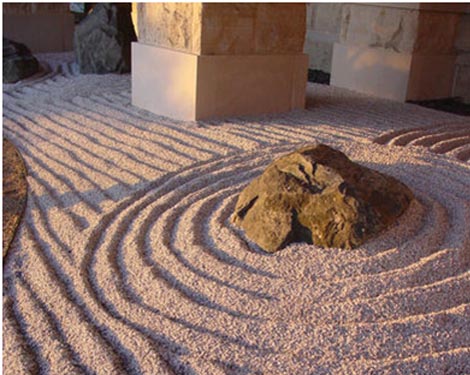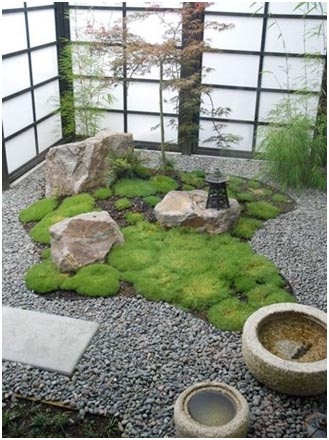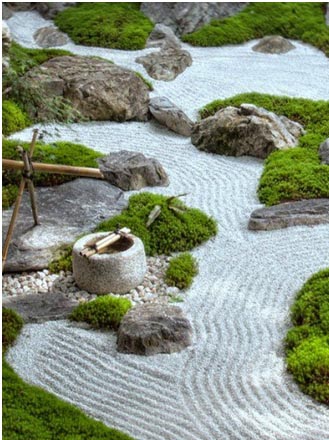Zen gardens are tranquil places featuring natural elements and designed for serenity. Buddhist temples in Japan were the first sites of Zen gardens, which are simple landscapes of sand, stone, plants and water that serve as places for reflecting and meditating.

Lines in sand represent rippling water in a Zen garden, where simple objects of nature are used to create a place for contemplation.
The Japanese rock garden often called a zen garden, creates a miniature stylized landscape through carefully composed arrangements of rocks, water features, moss, pruned trees and bushes, and uses gravel or sand that is raked to represent ripples in water.

A zen garden is usually relatively small, surrounded by a wall, and is usually meant to be seen while seated from a single viewpoint outside the garden. Zen gardens are designed to create a stripped-down awareness of thought. They are intended to imitate the intimate essence of nature, not its actual appearance, and to serve as an aid to meditation about the true meaning of life.
This kind of garden featured either rocks placed upright like mountains, or laid out in a miniature landscape of hills and ravines, with few plants. The ocean style featured rocks that appeared to have been eroded by waves, surrounded by a bank of white sand, like a beach.

Chinese landscape painting was one of the many Chinese arts that came to Japan with Zen Buddhism in the fourteenth century. Landscape painting and landscape gardening were closely related and practiced by intellectuals, the literati inspired by Chinese culture. Zen gardens support tranquility through their art.



















Your Message